
"Dal non- finito al finito "
Performance Installation 2018
1.Kunst und Kulturfestival, Kulturakademie Tarabya 30.6.2018
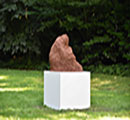 |
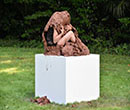 |
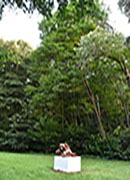 |
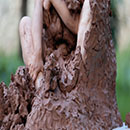 |
|||||
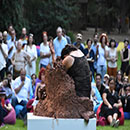 |
 |
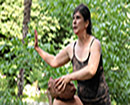 |
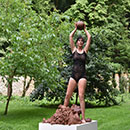 |
|||||
![]()
In her performance installation “dal non-finito al finito” (A.T.), Nezaket Ekici engages with the history of sculpture and the concept of the non-finito—the “unfinished.” First popularized by Donatello and notably used by Michelangelo, non-finito is a recognised term for sculptures often left incomplete, sometimes due to financial constraints. Auguste Rodin later adopted the unfinished aesthetic as a deliberate stylistic tool, using it to provoke emotional responses in viewers.
Ekici takes this idea further by merging the role of sculptor and sculpture. Approximately one hour before the performance begins, she covers herself entirely in coarse clay while standing on a pedestal. By the time the audience arrives, what they see is no longer a human figure but a bulky, nondescript, amorphous mass. Both within the sculpture and part of the sculpture itself, Ekici transposed the human into the art, reforming the existential relationship between the muse and its maker.
Gradually, the artist begins to move. With slow, deliberate gestures, she frees herself from the clay. Her hands break through the surface, revealing her form as she sculpts her own body out of the material that encases her. The clay that falls away—once a kind of visual prison—becomes material for a second act: she gathers the discarded clay and forms it into a sphere.
In doing so, Ekici adopts the dual role of creator and creation. She models herself as an individual while simultaneously shaping an external object; one action of undoing is simultaneously also a second act of doing. In a symbolic gesture, she fashions herself as a non-finito version of the mythological figure Atlas, a titan who was condemned to bear the weight of the world on his shoulders. But unlike the divine Atlas, Ekici presents a human, and unfinished version—fragile, evolving, incomplete.
Her performance is an existential reflection upon life, not as a still stasis made of individually complete moments, but as a ceaseless procedure of growth and decay. There is no final form that is finished and Ekici’s art deconstructs the human condition as one which is always underway—the very nature of existence implies that we have yet to reach our end, that our very being lies midway between our creation, and its undoing.
This performance echoes earlier works such as blind (2007), where she broke free from a plaster sarcophagus, and Pondus(2015), in which she struck a life-sized clay block with her bare hands until holes appeared. In dal non-finito al finito, however, she shifts perspective: instead of attacking or escaping the material, she emerges from it—transforming herself and the raw substance into a living, breathing work of art.
Even in forming the clay globe, the sculpture remains incomplete. It is only approximate. She remains human—imperfect, transient, and in progress. The non-finito is not a flaw but a reflection of human becoming. (Text Edited: Jono Wang Chu)
![]()
Pedestal, Clay
![]()
Preparation: 1 hour
Performance: 35 min
![]()
Assistants: Cagla Sönmez Cakir, Özgü Kutlu Türer, Pelin Terzi, Ayse Tanman
Camera and editing: Baran Sasoglu
Photo: Bülent Cakir
Curator: Pia Entenmann